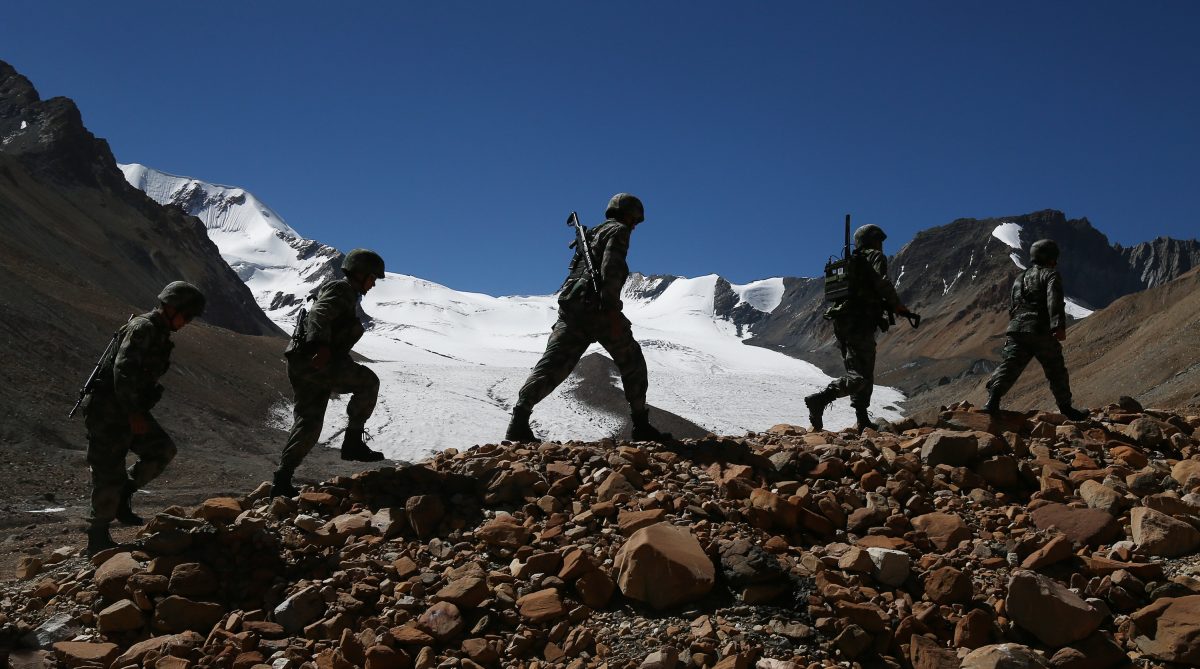ANIRUDH KANISETTI
 Inconsistencies in Parliamentary Standing Committee report have worrying implications for the state of India’s China policy.
Inconsistencies in Parliamentary Standing Committee report have worrying implications for the state of India’s China policy.
With the release of the report of the Parliamentary Standing Committee on External Affairs on India-China relations, it appears that the Doklam issue has been well and truly laid to rest. But questions still remain over what exactly transpired before, during and after the crisis that dominated headlines barely over a year ago, and why.
The Committee has simultaneously commended the government’s defusing of the crisis and expressed concerns over the Chinese presence at Doklam, which implies that the issue has not quite been resolved. In fact, the report goes as far as to say in another section that “it is difficult for the Committee to be content with India’s continuing with its conventionally deferential foreign policy towards China”.
An analysis of the Doklam crisis can speak volumes about the unspoken reasoning behind India’s current China policy.
India’s crisis
The Doklam issue is not really about Doklam, rather, it is part of a pattern of Chinese military occupation of disputed areas, which in turn serves broader strategic goals. The tactic is to use military force to change the status quo, thus forcing other disputants to accept the new, strengthened Chinese position.
When China attempted to construct a motorable road in Doklam, India needed to ensure that the Chinese occupation of this sensitive area was not unchallenged. This was a high-stakes faceoff, with the entire world watching. India’s willingness to stand up to Chinese aggression was in the balance, possibly fuelling much of China’s jingoistic rhetoric during the crisis.
Unexpectedly, on 28 August 2017, India announced that “disengagement of border personnel has been agreed to and is ongoing” and withdrew its troops. China, meanwhile, insisted that its patrols would continue.
Chinese construction activity at the site has only intensified since then. A revelation to this effect was published by The Print in January, but received far less popular and media attention than the ‘resolution’ of the crisis had. Senior officials and ministers have been repeatedly questioned on the matter. They have all claimed, with varying degrees of conviction, that there have been no further developments at the face-off site – even Parliament does not seem to know the full details. A quick search on Google Earth shows that all these claims are inaccurate.
The conclusion is inevitable: The key issue for India’s involvement in Doklam – Chinese occupation of disputed territory by the use of force – has not been resolved. But much ado has been made of the Indo-China relationship post-Doklam, and claims made about a ‘reset’ and the benefits thereof, which are yet to materialise.
Aftermath
Marginally fewer Chinese border incursions and some unclear hints of economic cooperation seem to have been traded for India’s complete cooperation on other fronts, from Chinese influence in the neighbourhood to the activities of Indian government officials and even construction activity on border areas – foreign secretary Vijay Gokhale has claimed “It is not for the government of India [sic] to tell the Chinese side that you construct infrastructure elsewhere along the border”. A border clash in Ladakh in August 2018 was described as an ‘unusual occurrence’.
But that is missing the point.
All these activities – from economic ‘carrots’ to border clash ‘sticks’ – are part of China’s overall strategy. Chinese foreign policy has diverse objectives and methods, and India is, in many of them, a means to an end. China keenly senses the need to manage its own direct ties with other South Asian countries and recognises that it cannot do so if India’s regional hegemony is left unquestioned.
In our latest research at The Takshashila Institution, we make the case that developing pressure points to which India’s political leadership is sensitive – humiliating high-stake face-offs as well as glamourous summits and ceremonies – is a vital part of this strategy. This could give China worrisome levels of deference in India’s policymaking by giving leaders an incentive to cooperate in the short term, or to develop a phobia of China that is ungrounded in strategic logic. This could jeopardise long-term interests by fostering an unrealistic attitude towards India’s neighbours.
In order to formulate effective counter-strategy, India must first have a clear long-term stance. China is a strategic rival. Despite possibilities of cooperation on some fronts, competition will be the norm. The government would do well to recognise that India’s cooperation with China needs to be much more critical and issue-based than its current course. The current obfuscation of the Doklam crisis and the policy change afterwards needs to be dispelled. Heed Parliament: India’s long-term national interest demands no less than an immediate re-evaluation and recalibration of its China policy.
India faces, for the first time, a resourceful and sustained challenger to its regional influence. Round Doklam may have gone to China, but the game is just beginning.
Anirudh Kanisetti is a Research Analyst specialising in history and geopolitics at The Takshashila Institution.
No comments:
Post a Comment